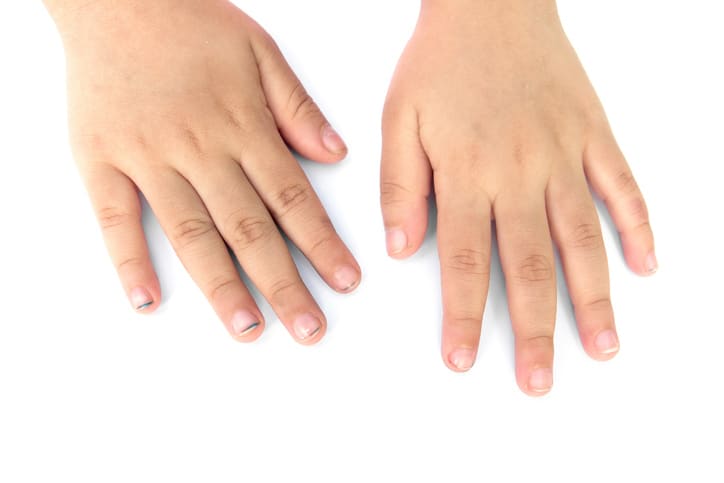Contents:
- Medical Video: 11 Secrets to Memorize Things Quicker Than Others
- 1. Keyword method
- 2. Loci method
- 3. Chunking
- 4. Engineering hierarchy
- 5. The first letter technique
- 6. Narrative technique
Medical Video: 11 Secrets to Memorize Things Quicker Than Others
As humans, memorizing activities are not only needed by students who will face exams, but also a mother who has to shop, a father who needs to remember the procedure for changing his child's diaper, or even in everyday life when having to remember someone's name or important telephone number . Sometimes, the head can mumet itself if something is missed. Here is how to memorize with extraordinary methods that everyone needs to try.
1. Keyword method
If you are learning a new language, this method is very suitable to try. First, imagine the new word that you want to memorize. Next, connect the words you have previously learned with the new word.
For example if you try to memorize yummy (tasty) in English, try to connect yummy with chicken. Chicken opor, flour fried chicken, grilled chicken, all kinds of delicious chicken dishes will continue to stick in you as yummy.
Research conducted by Carney and Levin (2001) shows that students who use this method are far more accurate in recalling memorized words compared to students who use the usual memorizing method. Wow, how exciting while memorizing words while imagining.
2. Loci method
Loci (read "lo-sai") is a method that links objects that need to be memorized to the actual conditions (on that object). This loci method is very suitable for memorizing lists of items in a clear order (Einstein & McDaniel, 2004; Herrmann et al., 2002; Hunter, 2004).
An example is, father needs to buy some daily necessities. The list of items given by the mother is wasted along with the bill in the pockets of father's pants. Father remembered if he had to buy home necessities. The needs of these items are cat food, bread, and apples. Father imagined Bimbo, the cat at home, was meowing in front of his food place next to the dining table. Next to Bimbo, there is a dining table with plates and several pieces of bread. Next to a plate filled with bread, there is a red apple ready for the mother to cut. By imagining the item that should be there, the father is able to remember what he needs to buy.
3. Chunking
Bower and Springston (1970) conducted a study. In his research, respondents were asked to memorize several sets of letters: YMC, AJF, KFB, INB, CLS, DTV and AMA, PHD, GPS, VCR, CIA, CBS. The second set of letters is easier to memorize because it is more familiar to be heard than the first set of letters.
This is the meaning of chunking, float a few little words to assemble something bigger.
4. Engineering hierarchy
The hierarchy, or arrangement sorted from the smallest to the largest, can be a suitable thing if you face an exam. After reading, make a frame of mind that shows an overview of the chapters in the book that you have learned. Link it in the form of an arrangement, make the more general discussion to a more specific discussion.
For example, if you are studying biology about kingdom Animalia. First you describe based on the presence or absence of the spine (vertebrates and invertebrates). And the chart continues to grow to the smallest part of the cat.
Research by Gordon Bower and colleagues (1969) states that respondents who memorized this structure were three times more able to recall the words they had memorized compared to respondents who memorized carelessly. But unfortunately, this model is usually rarely used by students.
5. The first letter technique
The first letter technique or donkey bridge in Indonesia is one of the popular ways to memorize. The trick is to take the first letter or syllable of the word you memorize. For example, for a scout boy who is dizzy, memorize the Dasa Dharma Pramuka, surely TACIPAPARERAHEDIBESU; Taqwa to God Almighty, Love nature and affection of fellow human beings, etc. to SUci in thoughts, words, and deeds.
Unfortunately this technique is considered to be less effective in memorizing and cannot be proven in the laboratory (Hermann et al., 2002). But certainly, the emergence of the first letter can increase the possibility to recall words that have been memorized before (Hermann et al., 2002).
6. Narrative technique
Writing stories while memorizing words? Hmm ... Challenge accepted! This technique requires us to compose a narrative text to memorize new words. For example: "Ani plays chases with new animal animals. The three-colored Felis catus ran while biting here and there. Oh! Ani was shocked to recall that one of the characteristics of Bimbo, his cat, was the presence of sharp canines because the cat was in the order of the carnivore. "The narrative was made to memorize the characteristics of cats.
Research by Bower and Clark (1969) states that respondents who used this technique were able to recall words they had learned six times more than respondents who used the usual random memorization method.
Unfortunately, this technique can only be used effectively if we fully understand the narrative text when learning and recalling.
READ ALSO:
- Is There Really a Drug to Improve Memory?
- 7 Easy Tricks to Learn Many Foreign Languages at Once
- 7 Habits That Can Help Brain Cognitive Functions












